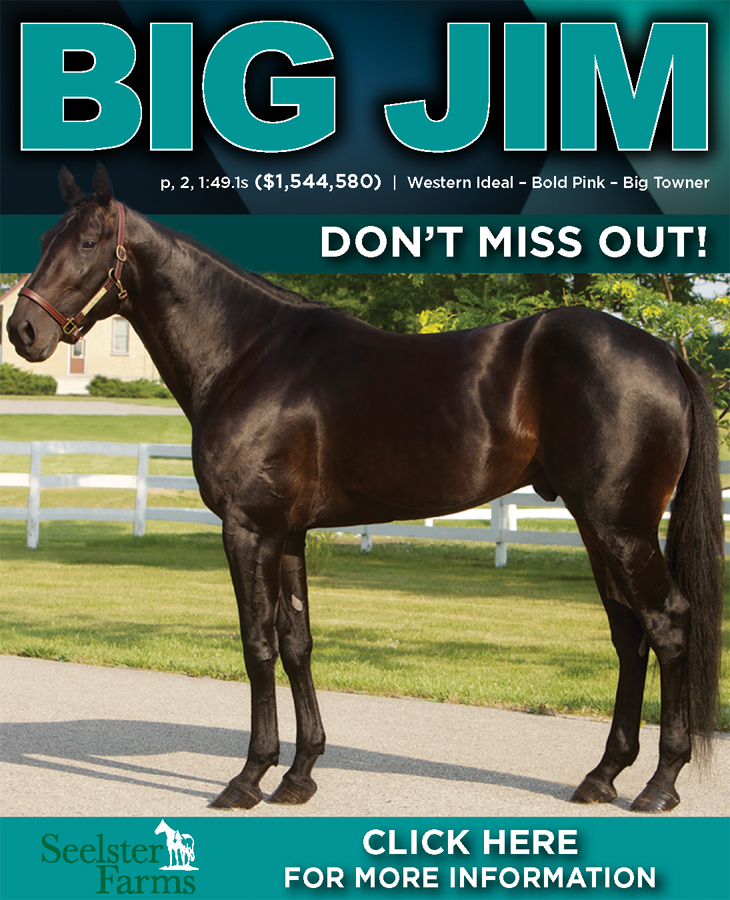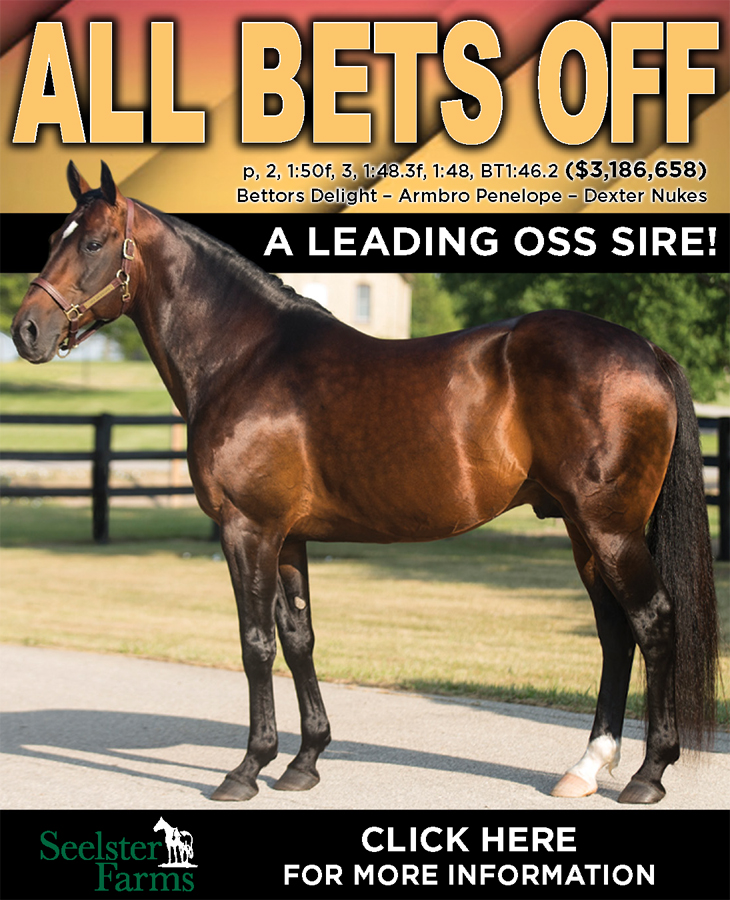

Of new good friends
by Alan Leavitt
Having stuck my neck out a lot further than I should have when I predicted great sire success for Rebuff, I now follow his 3-year-old racing career with interest. This despite the fact that only a colt’s 2-year-old racing campaign gives me the answers to his potential as a future sire.
Here, a slight digression RE: the different contributions the sire and the dam make to each of their progeny. Stamina comes from the sire, and speed comes from the dam.
These are generalities, of course, but they tell you why a game stud on the track can succeed as a sire, and a mare who can go a much faster quarter than she can a mile can be a great producer.
This is also a good time to revisit the subject of the speed gene. I am not oblivious to the questions that have been raised to my use of that term, but looking at a horse’s genetic profile as a deck of playing cards, from a low card of “2” to a high card of “Ace” gives a layman horse breeder a way to measure a horse’s potential to produce speed, whether it’s a sire or a dam.
Looking at a proven top sire’s genetic deck, it probably starts with a 10 and goes up from there. Since the sire and dam contribute equally to each conception, although what each contributes is totally different from the other parent, a Walner can be seen as bringing a high card, say a 10 or even a jack, to every mating.
That means if even the mare in the mating comes up with only a low-to-medium card, say a six, the average of the two is high enough that the result is a reasonably fast raceway horse. Which is why even a Walner from a mediocre matron can still hold his or her own at the raceways and earn decent money.
So when it comes to Rebuff, I’m predicting that as a sire he’ll be dealing from a stacked deck of high cards when it comes to his ability to pass on his speed gene.
All of which leads me to a 3-year-old trotting gelding named Double Deceiver, who just kicked Rebuff’s pattootie in a Kentucky Sire Stake. D² is by Cantab Hall, and out of Sarcy, a fast mare who won over a quarter of a million bucks, by Donato Hanover. To date he has a record at 3 of 1:50.2, with earnings of $503,479, and counting.
He’s trained by Carter Pinske for his own Pinske Stables and Makenna Lynn Pinske, certainly a close relative. His regular driver is David Miller, who better than in the racing bike cannot be found.
When you start research on D² the first fact that hits you is his yearling selling price of only $17,000. How that happened became clear as a crystal when my old friend Robin showed me the horse in his stall.
He’s a little guy now, and he had to be even smaller when he went to the Lexington Yearling Sale.
Which calls to mind the old saying that it’s not the size of the dog in the fight, but the size of the fight in the dog. Although, personally, I think execution by firing squad would be appropriate for anyone caught dog fighting.
Double D’s extended pedigree shows a 3 by 4 cross to Valley Victory and the same 3 by 4 cross to Garland Lobell. As a reminder, when the sum of the generations in which the same name appears twice is six or less, the horse so bred is defined as “Inbred.”
When the sum of the two generation in which the same name appears twice is 7 or 8, the horse so bred is defined as “Line-bred.”
If no name appears twice when the sum of the two generations is eight or less, the horse so bred is properly defined as an “Outcross.”
The great majority of American-bred standardbreds are outcrosses. This bodes well for the immediate future of the two breeds, trotters and pacers, because inbreeding can and will result in a loss of heterozygosity, on the variability factor, which manifests itself as a loss of fertility in the males, or in our case, the stallions.
That happened some 30 years ago, when virtually all our trotting studs had troubled fertility. That’s not the case today, but it does leave the field open for some judicious inbreeding. I’m talking about using two nearly-perfect individuals, both conformation and racing-wise, and going no closer than 3 by 3, for starters.
I came up under Jim Harrison, who forgot more than anyone else ever knew about standardbred breeding, and he told me that if a great breeder took the pains to inbreed the two right horses, the result would be a “Super Horse.”
Harrison also predicted that crossing French studs on American-bred trotting mares would produce superior trotters, and that is exactly what has come to pass. Anyone who hasn’t read his edition of The Care & Training of the Trotter & Pacer still doesn’t have a complete education in harness racing.
And now, a personal note that shows once again how great things can happen when you’re on the racetrack. I have a new friend, the kind of friendship that seems like its 30 years only after 30 days. My new friend is Besime, a wonderful horseman who completes the other half of Brett Pelling’s operation.
But beyond his talent with horses, Besime is simply a great guy, and I’d like to thank The Red Mile for making it possible for us to meet.
Now, with the world again watching the Middle East as things are starting to heat up there, an Israeli story that gives you the whole book on that little country and its people:
A motorist in Tel Aviv asks a cop if he can park on the other side of the street.
The cop says, “No.”
The motorist says, “What about all the cars that are already parked there?”
The cop answers; “They didn’t ask.”
Have a question or comment for Alan Leavitt? Reach him by email at: ajl@walnuthall.com















